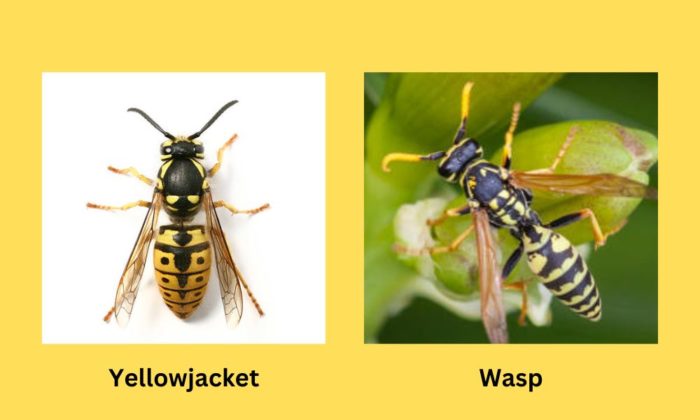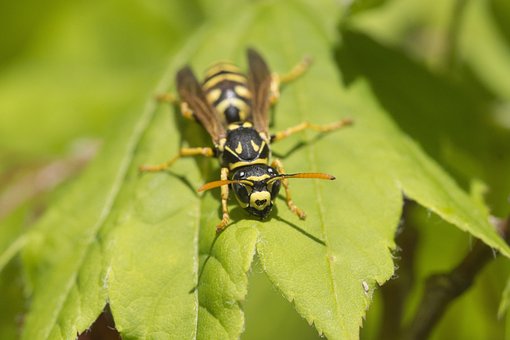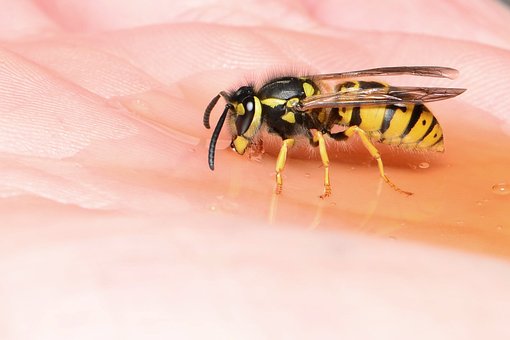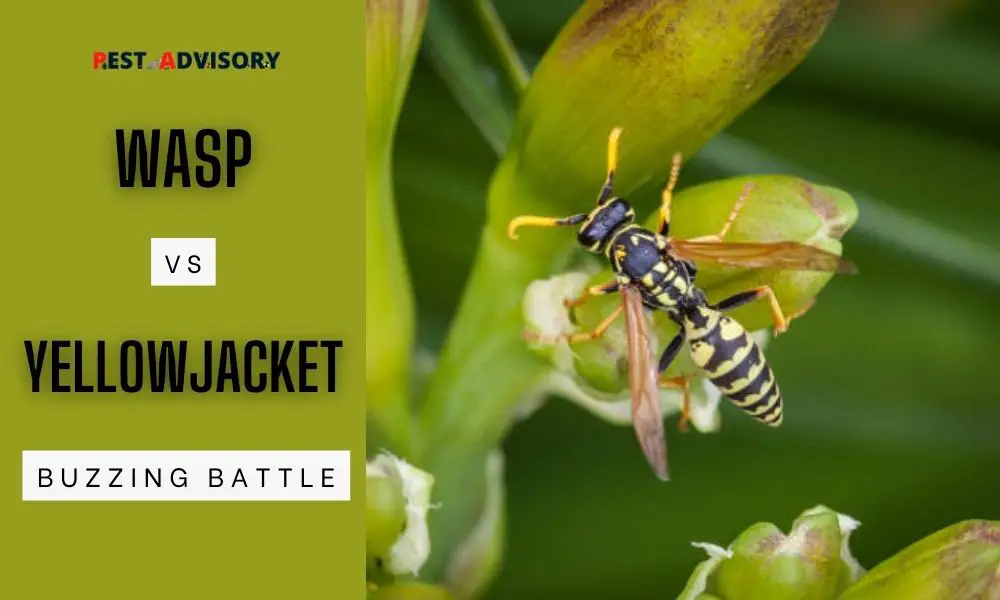Summertime is full of outdoor activities and sunshine, but it’s also the season when wasps and yellowjackets become more active.
These stinging insects can quickly ruin a backyard barbecue or picnic, and their presence can cause fear and anxiety in many people. But what are wasps and yellowjackets, and how do they differ?
In this article, we’ll take a closer look at these buzzing insects, exploring their physical characteristics, behavior, and the risks they pose to humans.
Important Note: If you're tired of pests and want a reliable solution, then you should definitely consider seeking help from a professional pest control company. DIY solutions can be effective, but if you're dealing with a significant pest infestation, you don't want to rely solely on DIY methods. Pest control companies typically don't charge huge fees. You can fill out this form to receive free quotes from the top local pest control companies, and compare the quotes and see for yourself. Then, finally, your pest problems will be eliminated for good.
Whether you’re a nature lover or simply trying to avoid getting stung, this guide will help you understand the differences between wasps and yellowjackets and how to stay safe around them.
Difference between Wasps and Yellow Jackets
Wasps and yellowjackets are both members of the Hymenoptera order, which also includes bees and ants.
While these two insects are similar in some ways, there are also several key differences between them.
Here are some of the main differences between wasps and yellowjackets:
Wasps vs Yellow Jackets: Size
When it comes to physical appearance, wasps are longer and can range up to 1 inch in length.
They have a slender bodies and a noticeably thinner waist, giving them a more elongated shape.
In contrast, yellow jackets are smaller than other wasps, measuring around 0.5 to 0.75 inches in length.
Despite their smaller size, yellow jackets are stockier and have a more robust build compared to wasps.
Wasps vs Yellow Jackets: Habitat
Both wasps and yellow jackets can be found in various habitats, including forests, meadows, and urban areas.
However, yellow jackets are more commonly found near human habitation and can build their nests underground or in hollow logs, tree stumps, attics, between walls, under eaves, and inside recycling bins.
Wasps vs Yellow Jackets: Color and Body
When it comes to color and body characteristics, wasps and yellow jackets both have black and yellow stripes, making it difficult to distinguish between the two at first glance.
However, yellow jackets tend to have brighter and more vivid yellow patterns than wasps.
In addition, yellow jackets have a less defined waist compared to wasps, which are typically slimmer with a more defined waist.
Wasps vs Yellow Jackets: Flight
When it comes to flight patterns, wasps tend to fly in a smooth, graceful manner, hovering around flowers and other potential food sources.
In contrast, yellow jackets are known for their erratic and aggressive flight patterns, often buzzing around rapidly and quickly changing direction.
This behavior can make yellow jackets appear more threatening and unpredictable compared to wasps.

Wasps vs Yellow Jackets: Behavior
Yellow jackets are much more aggressive than other wasps and are more likely to sting.
They are known to be territorial and will actively defend their nests from perceived threats.
In contrast, wasps will generally only attack if they feel threatened or provoked.
Yellow jackets are more likely to attack people and pets, and their stings can be painful and potentially dangerous for those with allergies.
Wasps vs Yellow Jackets: Diet
Yellow jackets are predominantly insect predators and scavengers, feeding their larvae with insect meat.
They also feed on foods rich in sugars and carbohydrates, such as plant nectar and fruit.
Wasps, on the other hand, primarily prey on insects, spiders, and other arthropods.
They may also feed on nectar and fruit, but their diet is not as varied as that of yellow jackets.
Wasps vs Yellow Jackets: Nest
Yellow jackets build large, papery nests that can hold thousands of individuals. These nests are often located in underground burrows or cavities and can be quite imposing.
In contrast, wasps build small, paper nests and typically live in colonies of fewer than 100 individuals.
These nests can be found in various locations, such as under eaves, in trees, or in shrubs.
Wasps vs Yellow Jackets: Predators
Both wasps and yellow jackets have predators, such as birds, lizards, and spiders, that feed on them.
However, yellow jackets are also preyed upon by mammalian predators such as skunks and bears, who will raid their nests for larvae.
This can be a significant threat to yellow jacket populations, particularly in areas with high predator density.
While wasps may also face predation by mammals, they are not as commonly targeted as yellow jackets.

Frequently Asked Questions
Are wasps and yellow jackets the same?
No, wasps and yellow jackets are not the same, although they belong to the same family of insects called Vespidae.
Yellow jackets are a type of wasp belonging to the genera Vespula and Dolichovespula, while other wasps belong to different genera such as Polistes and Paper Wasp.
Which wasp is more aggressive between wasps and yellow jackets?
Yellow jackets are generally more aggressive than other wasps, including those in the same family of Vespidae.
Yellow jackets are known for their aggressive behavior and can be provoked easily.
They have a reputation for being very territorial and protective of their nests and will attack humans and animals who they perceive as a threat.
In contrast, other types of wasps such as paper wasps, hornets, and mud dauber wasps are generally less aggressive and will only sting if they feel threatened or their nest is disturbed.
What attracts wasps and yellow jackets?
Wasps and yellow jackets are attracted to sweet or protein-rich foods, garbage and organic waste, flowers, and certain scents.
They also seek out sheltered areas for nesting, such as eaves and trees.
To avoid attracting these stinging insects, it’s important to keep food and garbage securely stored, avoid wearing strong fragrances, and seal up any potential nesting sites around your property.

Conclusion
While wasps and yellow jackets may share some similarities, they have distinct differences in their size, color and body shape, flight, behavior, diet, and nest-building habits.
Like yellowjackets, you should know the difference between wasps and mud daubers to avoid potential infestation problems.
Understanding these differences can help you better identify and avoid these stinging insects, particularly if you are allergic to their stings.
By taking proactive steps to avoid attracting them and removing potential nesting sites around your property, or by planting wasp-repellent plants you can reduce your risk of encountering these buzzing insects and keep your outdoor activities safe and enjoyable.
So next time you see a black and yellow insect buzzing around, take a closer look and see if you can spot the difference between a wasp and a yellow jacket.

